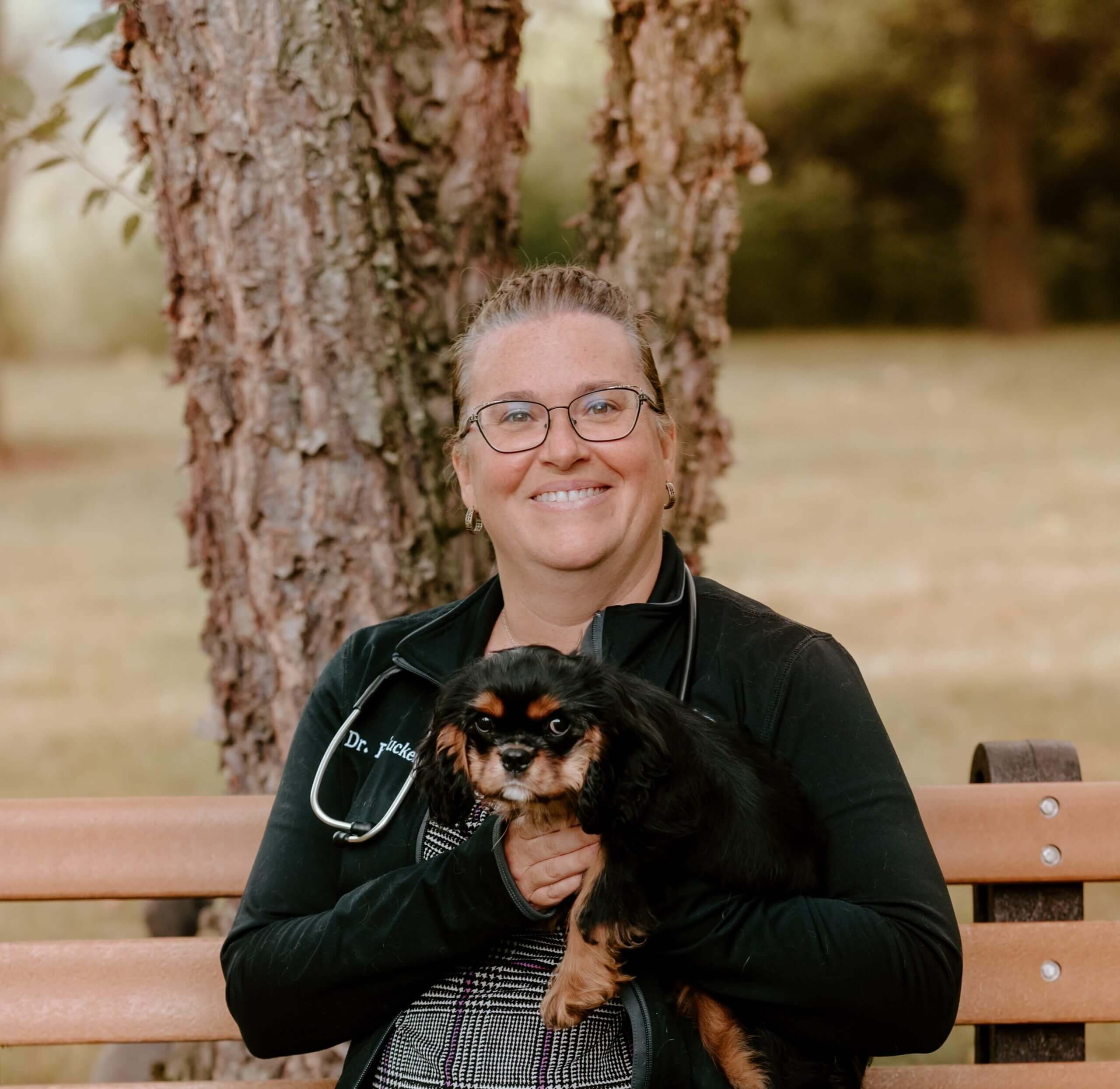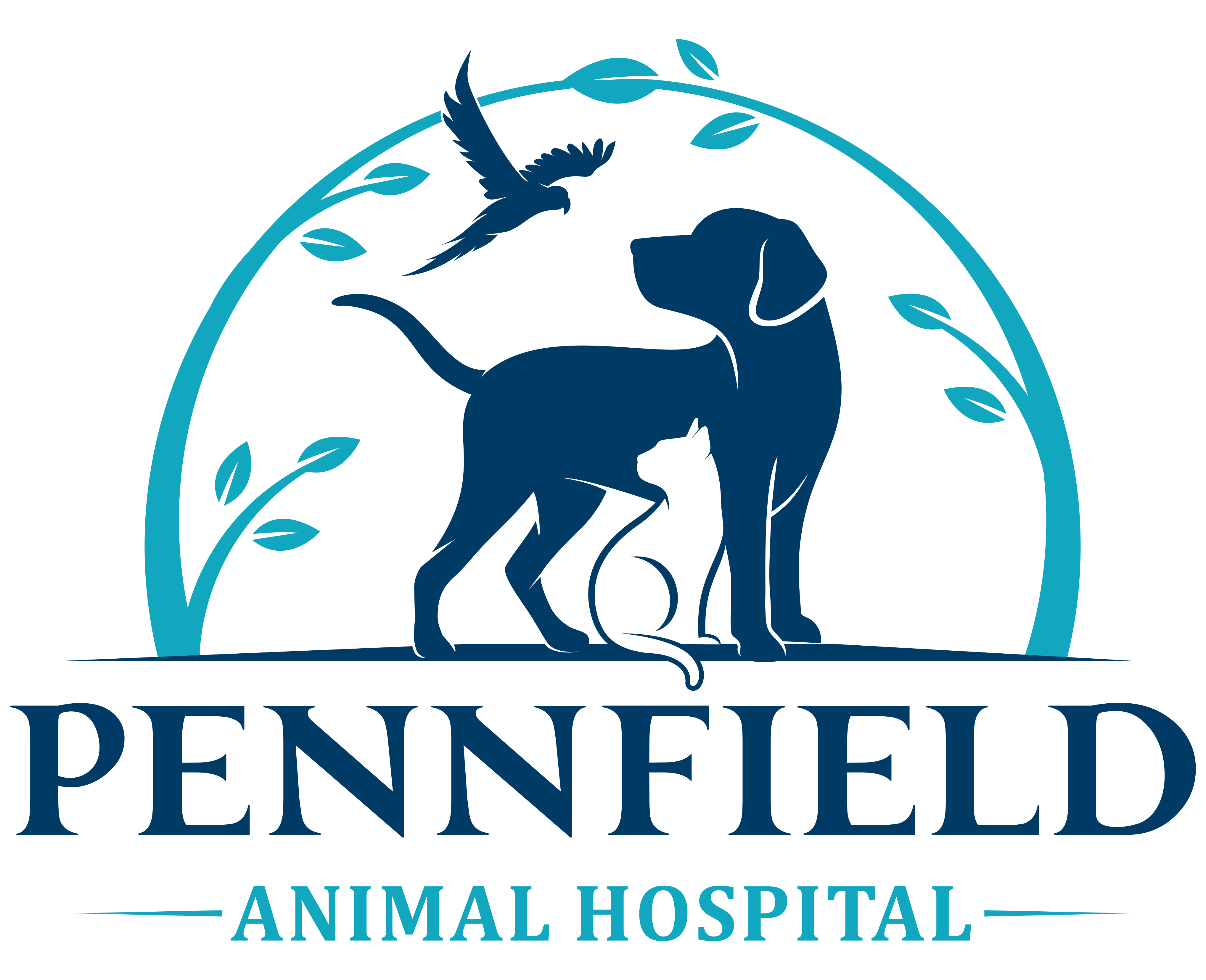20849 Capital Avenue Northeast, Battle Creek, MI 49017
Our Doctors

Dr. Mark Atma



Dr. Beth Tucker



Dr. Courtney Ballard



Dr. Ruth Ten Broek



Dr Shaira Rivera



Dr. Melissa Nelson, DVM
Our Services
- Wellness
- Dental Care
- Veterinary Surgery
- Advanced Diagnostics
- Pet Nutrition
- Pain Management
- End of Life Care
Keep Your Pet Healthy with Routine Wellness Visits
Just as you visit your doctor once a year for a complete check-over to make sure that you are healthy, your pets - as members of your family - should also be checked over for any underlying illness. Sometimes changes in your pet's health come on gradually so you might not realize that they are occurring. Your Battle Creek area veterinarian, as a trained professional, is often able to detect these changes with a comprehensive physical examination. If something is amiss, we can make recommendations for further diagnostic workup or suggest how to monitor for further changes in health. Often, catching a disease early can make the difference between a shortened lifespan with a lessened quality of life for your pet and being able to do something to improve their condition.
Preventative Medicine for your Pet
Preventative medicine implies doing something to keep your pets healthy in the first place rather than just treating them when they are ill and the damage is done. This includes the proper use of immunizations to prevent common infectious diseases, products to prevent disease-producing parasites (fleas, ticks, heartworms, intestinal parasites), and patient-specific preventative needs – such as prevention of painful tooth disease and skin problems. And just because a pet is strictly indoors does not mean that they are not at risk of these diseases. Ask your veterinarian what preventative measures will best keep your pet from getting ill.
Call our Veterinary practice today to schedule a wellness visit for your pet – it might be the single best thing you can do for your furry friend!
Dental Care in Veterinary Medicine
Dental care in Veterinary Medicine is both corrective and preventive. Research has shown that even by age 3, 70% of cats and 80% of dogs have some degree of dental disease! This usually starts as tartar (brown stain) and develops into tartar and calculus. This, in turn, leads to an irreversible disease process known as periodontal disease (infection, gum recession, and tooth loss). Many people are not even aware that their pets have any problem because they may not be looking at their pet’s teeth; or perhaps, they just notice a bad smell (halitosis) coming from their pet’s mouth. This is one reason why regular wellness visits are important for your pet’s health. Your veterinarian can assess the degree of tartar and/or disease and make recommendations as to what can be done about it before permanent damage is done. This usually takes the form of recommending an in-hospital dental cleaning procedure in which your pet is sedated and the calculus and tartar are cleaned off the teeth with an ultrasonic scaler. The teeth are then polished and fluoride is applied – just like at your dentist!
Keep Your Pets Teeth Healthy Between Visits
Daily brushing is the best way to maintain dental health. We can instruct you on how to start. A good home-care routine can stretch out the time that a pet needs to have a thorough cleaning done in the hospital. Brushing the teeth of some pets does prove to be a challenge, however, so there are other means of keeping your pet’s teeth clean, too – such as chews, medicated rinses, and topical gels.
The veterinarians at Pennfield Animal Hospital can help you determine the best, most effective means of keeping your pet’s teeth in good health between regular dental cleanings.
Some of the Surgery Performed at Pennfield Animal Hospital
- Spays & Neuters
- Mass removal and biopsies
- Microchipping identification service
- Cyst removal & skin biopsies
- Abdominal surgery and exploratories
- Dental tooth extractions
- Routine orthopedic repairs (non-complicated fractures)
Pet Surgery Protocol
Prior to surgery, your pet will need a current examination to ensure that your pet can safely go under anesthesia. This can be done on the morning of surgery or preferably a few days before. Your pet should also be fasted for 12 hours and have water withheld the morning of surgery.
At our clinic we strongly believe in the value of doing pre-anesthetic blood testing prior to surgery to make sure your pet is able to safely deal with the anesthetic agents; if a pet has previously unknown organ disease, anesthesia and surgery could be potentially dangerous for your pet. To make sure this does not happen and to minimize the risks to your pet, these pre-anesthetic tests can alert the doctor to these problems so that he may either alter the anesthetic agents used or discuss alternatives to surgery if the pre-existing condition warrants it.
Spay and Castration
The most common surgeries that we perform as veterinarians are neutering (spaying in females, castration in males). This means to remove the reproductive organs to prevent unwanted puppies and kittens. There are other health and behavioral benefits to these procedures beyond preventing unwanted offspring. Some of these conditions can have fatal consequences. So, therefore, unless a pet is specifically to be used for breeding purposes, we recommend having him or her neutered typically between 4 and 6 months of age, with some exceptions that your doctor will discuss.
Veterinary X-rays
X-rays—also known as radiographs—are very useful to identify and diagnose many medical conditions. Using this technology, the veterinarians at Pennfield Animal Hospital can virtually look into your pet's lungs, heart, abdomen, oral cavity, bladder, kidneys, and other areas. It is one of the primary means that we have to diagnose fractures, heart and lung problems, intestinal obstructions, localize infections, identify arthritis and many other orthopedic conditions.
We are also able to submit radiographs of hips and elbows for rating by the Orthopedic Foundation for Animals.
Ultrasound Imaging
Ultrasound technology is another non-invasive and pain-free technique to image your pet's internal organs. It uses sound waves to produce a real-time image and has certain advantages over x-rays.
It is particularly useful in looking at the structure of your pet's abdominal organs such as the spleen, kidneys, liver, and gallbladder. It can also be used to evaluate heart functions and to look for bladder stones and tumors. Ultrasounds are typically not stressful for your pet and take about 30 to minutes to perform.
Our Laboratory
When your pet is sick and it is important to discover what is wrong as quickly as possible, one of the most important tools that we have is the ability to analyze how well your pet's internal organs are functioning. For example, is a severely ill dog in diabetic ketoacidosis or acute renal (kidney) failure?
Pennfield Animal Hospital’s in-house laboratory testing allows your veterinarian to gain a view of how your pet's body is functioning in order to assess overall systemic health without the need for invasive and expensive procedures. Our chemistry analyzer and CBC machine tests your pet’s blood for these problems and gives us answers within minutes so that we can begin treatment as quickly as possible.
We can also do routine senior wellness tests through our reference lab when time is not of the essence and is more cost-effective for regular screening tests.
We also perform testing prior to procedures that require anesthesia so that we can better assess the risk of the procedure.
Electrocardiography (EKG)
Electrocardiographs (EKG) are snapshots of how your pet's heart functions. These are helpful in detecting arrhythmias and can help us better characterize other types of heart disease.
We have an exam room screening device that is quick and easy to screen for common arrhythmias. If we have need of a more complete study, we can perform one in our treatment area and send it electronically to have a board-certified cardiologist evaluate it and recommend specific treatments.
Internal Medicine
In addition to our regular in-house blood testing, we partner with the national veterinary laboratory, Antech, and the Diagnostic Laboratory at Michigan State University to help our doctors confirm and identify endocrine and metabolic diseases such as Addison’s Disease, Cushing’s Disease, immune-mediated diseases, etc. In addition, we can test pets for specific allergies with a simple blood test.
Good Nutrition for Better Health
Some of the more confusing topics for clients are: what is a healthy food to feed my pet, how much of that food should I feed my pet, and what is the value of a premium diet. These are important considerations, not only for your pet’s health, but also for your pocketbook since the greatest cost of pet ownership is usually feeding them! Pet food labels are also confusing; if an old rawhide chew came with a nutritional label, it would show a high level of protein – but it has absolutely no nutritional value if consumed! Some people believe that feeding people food is a way to ensure good quality food, but this can lead to nutritional and dietary deficiencies that can negatively affect the health of your pet. One suggestion is to always choose a name-brand diet that has an AAFCO recommendation on its label. The Association of Animal Feed Control Officials (AAFCO) develops and implements standards for the manufacture, distribution, and sale of animal food. At a minimum, this should be on the label to ensure a basic level of food quality. The food label should also state for what stage of life the food is designed.
Pet Obesity and its Effect on Health
Overfeeding, unrestricted access to food, feeding table scraps and excessive treats, and lack of exercise are all reasons why nearly 35% of pets in the U.S. are overweight. It is not always easy to recognize when a pet is overweight. However, excessive weight in our pet population is a wellness issue and a risk factor for disease. Extra weight can lead to serious health risks such as heart disease, high blood pressure, arthritis, skin problems, and even shortened life expectancy -- all of which are preventable.
If your pet is overweight, you can do something about it! Cutting out treats and/or limiting the amount of calories your pet gets daily, also increasing level of activity and exercise, and diet choice are all important factors. Schedule a time for our doctors and staff to assess your pet’s weight and go over how to start a program to get your pet back down to an ideal weight.
Supplements
Generally, if your pet is on an AAFCO approved diet, we do not recommend extra vitamins. Over-supplementation of these can sometimes be dangerous. However, there are other supplements that are beneficial and may be helpful in certain situations. As mentioned earlier, omega fatty acids are important in skincare, allergy treatment, and immune support. Probiotics are useful in the treatment/prevention of diarrhea (especially when a pet is getting antibiotics for other illnesses). Other nutraceutical and holistic supplements exist for palliative care and adjunct treatment of certain organ diseases.
Prescription Diets
There are many prescription diets now available to treat specific diseases such as urinary problems, liver, heart, gastrointestinal and endocrine disease, obesity and other fiber-responsive diseases. As with prescription drugs, we first need to establish and maintain a client-patient-doctor relationship and assess which prescription diet is right for your pet’s condition.
Recognizing and Managing Pain in Animals
Since the advent of preventative veterinary medicine, our pets are living longer. With longevity comes the associated aches and pains – arthritis, degenerative disc disease, and chronic joint injuries, among others. Our pets cannot speak to us, so they often suffer in silence. The signs of pain in animals can include vocalizing, stiffness, less desire to run and jump and climb stairs, decreased appetite, or a change in personality and behavior. We believe in keeping animals as comfortable as possible, and to achieve that goal we use various pain management strategies. These include (but are not limited to) the use of non-steroidal anti-inflammatory drugs (NSAIDs), opioids, and therapeutic class IV deep tissue laser therapy.
Pain Management Options Available at PAH
NSAIDs are pain, inflammation, and fever relievers. They are commonly used for chronic pain in older dogs as well as for acute pain in pets of all ages. Aspirin and ibuprofen are NSAIDs used in human medicine, but human drugs are not always a safe option for pets. The FDA has approved certain NSAIDs for safe use in pets, but they must still be used under the guidance of a veterinarian to help prevent adverse reactions. Onsior is a new NSAID that is approved for use in cats and has been working well for a number of conditions in our patients.
Opioids include any morphine-like synthetic narcotic that produces effects such as pain relief and sedation. These can be used in conjunction with NSAIDs to provide additional pain relief, used in place of NSAIDs in pets that cannot tolerate them, or used in pets whose pain is too severe for NSAIDs to be of benefit, such as with cancer pain.
Class IV deep tissue laser therapy is an approach to the reduction of pain and inflammation and the acceleration of tissue healing that is both drug-free and non-surgical. It relies on the use of a beam of laser light to deeply penetrate tissue without damaging it. It induces a biological response in the cells called “photo-bio-modulation”, which leads to reduced pain, reduced inflammation, and increased healing speed. Laser therapy has been scientifically proven to be successful in treating post-surgical pain, acute pain, and chronic pain. Treatments are comfortable for the pet, can be performed with the client present, and take a matter of minutes and protocols are unique to each patient and condition.
We believe that managing pain is an essential element to healing, so we send every pet home with pain medication after any surgery. There are many other instances in addition to post-surgical pain where your pet may require pain management. A veterinarian will evaluate your pet and together we can come up with a pain management plan that is best for the unique needs of your pet and your lifestyle. The ultimate goal is to minimize your pet’s pain and maximize mobility and quality of life without adverse effects.
What is Euthanasia
In the veterinary field, euthanasia is a medical procedure that's used to mercifully end a pet's life. Typically, when a pet is euthanized the veterinarian will first inject a calming anesthetic. This is followed by an injection of the euthanasia solution, which causes respiratory failure followed, by cardiac arrest. The whole process takes just a few seconds and causes virtually no pain.
Making a Difficult Decision
One of the toughest things about euthanasia is knowing when the time is right. Although some may tell you, “your pet will let you know,” that's not always clear for pet owners. To help you make an educated decision, first ask yourself these questions about their current quality of life:
- Is my pet interested in the surrounding activity or is it withdrawn and tired all the time?
- Does my pet seem to be in pain?
- Has my pet stopped eating and drinking?
- Does my pet have control of its urinary tract and bowels?
- Can my pet walk on its own without significant suffering?
- Has there been any irreversible organ damage?
- Do my pet's good days outnumber its bad days?
- Are there any humane veterinary treatments available?
- What would I want if I were in my pet’s situation?
- What is my veterinarian's opinion?
Remember, no one knows your pet better than you. So after you've asked yourself these questions, think about your intuition, too. Even though it's one of the most difficult decisions a pet owner makes, it can also be the greatest act of love.
Preparing for the Procedure
Unfortunately, the tough decisions aren't quite over. If you decide to euthanize your pet, you have several more choices regarding the actual procedure.
Do you want to be present?
You can choose whether or not to be with your pet as it's being euthanized. Be sure to think through your feelings carefully. Many pet owners have later regretted their decision not to be present because of feelings of guilt and abandonment that linger after the pet's death.
Alone or with support?
Euthanasia is a completely personal experience. Perhaps you may want a friend to lean on during the procedure or maybe you'd feel more comfortable if it's just you and your pet. Whatever you decide is okay. It's your right to experience this your own way.
What about cremation or burial boxes?
You can either take your pet home for a personal burial or choose to have them cremated. If you decide to bring your pet home, your veterinarian will provide a burial box. If you opt for cremation, you can choose to have your pet returned to you.
Take Time to Heal
After going through this incredibly emotional experience, many pet owners are flooded with a variety of feelings. Guilt, helplessness, and anger are some of the tougher ones to work through. You may also feel relief and peace now that your pet is no longer suffering. Whatever you're going through, give yourself time to feel the emotions. Making this decision takes an extraordinary amount of selfless love. And after consistently receiving this gift from your pet, take solace that you're giving that same love back one last time.
We understand that a pet is part of the family. Our goal is to provide each one with a long, healthy, and happy life. The day your pet enters our hospital it becomes part of our family, too. From new puppies and kittens to graying seniors, we are there every step of the way. Our comprehensive suite of veterinary services ensures that every pet is given the excellent care they deserve.
